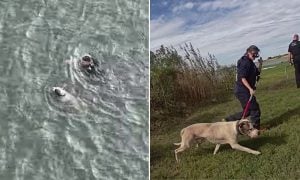The Santa Cruz River, an essential resource for wild animals and the local community, is on the brink of a significant milestone. A stretch of the endangered river is poised to become the “first urban national wildlife refuge” in Arizona and the second in the Southwest, Arizona Republic reported.
The refuge proposal has been gaining support from the community since 2021. Visits from the United States Fish and Wildlife Service (USFWS) and the Department of Interior to assess the area have evolved into a collaborative effort, as the USFWS and the Santa Cruz River Refuge have joined forces to craft a vision for the wildlife refuge.
Initially, the plan for the urban refuge was limited to the lower portion of the river. However, the idea expanded significantly after Andrew Jackson, one of the largest property owners in the area, joined the cause. Jackson’s vision is to preserve nearly 12 miles of natural landscape along the river for future generations, leading to the current proposal that centers around 90 miles of land.
“Seeing a bobcat or a javelina, that’s part of the appeal of living here,” Jackson told Nogales International. “What we have is so special.”
Urban wildlife refuges create safe spaces for wildlife, allowing them to raise families, freely roam and hunt, and not worry about being in direct contact with humans. They also allow humans to see some of these magnificent creatures in their natural habitat, which often fosters respect for animals and nature.
According to the proposed design by Santa Cruz River Refuge, more than 300 different species of birds live in the area, and they depend on the north-south migration corridor. The refuge design will protect the migration corridor, along with existing wildlife corridors that allow animals like jaguars, bobcats, coyotes, and javelinas to travel between the Sky Islands and river areas.
Lady Freethinker applauds the Santa Cruz River Refuge and all those involved in the effort to secure the federal designation that this area deserves. Their work will ensure that the Santa Cruz River can thrive as a habitat for nature and animals for years to come.








